When will things will return to normal in Colombia? We look at South Korea’s and China’s responses to coronavirus – what can Colombia learn from Asia’s success in battling coronavirus?
We have been asked by many Medellin Guru readers, “When will things return to normal in Colombia?” after the nationwide Colombia quarantine.
This is a very difficult question to answer. So, first we look a the current status of coronavirus in Colombia.
This is followed by a review of the successes in Asia in both South Korea and China in dramatically reducing their number of new coronavirus cases. We believe Colombia could learn from the successes in Asia and “flatten the curve” in Colombia even faster and start to to return to a more “normal” life more quickly.
Colombia’s initial nationwide quarantine was originally ending on April 13 but it has now been extended eight times until September 1 and ended on September 1.
The Colombian borders will continue to be closed except for the border with Ecuador opening on June 23 just for humanitarian transit of citizens and permanent foreign residents. Also, there will be no domestic flights during the period from June 1 to June 30 or later. Domestic flights in Colombia resumed in July with a pilot.
Also, according to the Minister of transport, international flights will be restricted until August 31 with international flights resuming with a pilot planned in September.
A new phase will begin from June 1 to 30 with the reactivation of museums, libraries and some other businesses. Also, starting in June, starts an “intelligent lockdown” that would allow the relaxation of restriction of movement measures based on regional conditions. These regional relaxation measures will be expanded “gradually” to recover productive life.
Current Status of Coronavirus in Colombia on October 27, 2020
Colombia Ministerio de Salud (Ministry of Health) reported the number of coronavirus cases in Colombia on November 2 – a total of 1,093,256 cases with 31,670 deaths.
The first coronavirus case in Colombia was on March 6, 2020 and by November 2 the number of cases had grown to 1,093,256 cases. The following chart shows a running 7-day average of new coronavirus cases in Colombia daily, so you can see the trend of new daily cases for more than the past month.

7-day running average of new daily coronavirus cases in Colombia, data source: Instituto Nacional de Salud, Nov. 2
Colombian has acted faster than most countries in putting in place measures to prevent the spread of coronavirus:
- March 12 – banned cruise ships to Colombia.
- March 12 – banned events with over 50 people.
- March 14 – closed schools nationwide until April 20.
- March 16 – closed Colombia’s borders.
- March 16 – banned non-nationals and non-resident travelers to Colombia.
- March 16 – banned events with over 50 people.
- March 20 – adults older than 70 in Colombia must stay isolated in homes except to buy groceries and medicines, use health services and access financial services until May 31.
- March 20 – city quarantines in Bogotá, Medellín, Cali and Cartagena for four days.
- March 23 – banned international travelers to Colombia.
- March 24 – started a nationwide Colombia quarantine and people must stay isolated in homes except one person per family can leave to buy groceries and medicines, use health services and access financial services until April 13. But on April 6, this quarntine was extended to April 26 at 11:59 pm.
- March 24 – banned domestic flights in Colombia until April 13.
The following table compares how many days from the first case of coronavirus in several countries until putting in place measures like closing schools nationwide or closing incoming air travel.

How many days from first coronavirus case in countries until put in place preventive measures, March 23, 2020
Coronavirus Cases in Colombia are NOT Nationwide
By putting in place measures to prevent the spread of coronavirus, it appears that Colombia is being successful in containing the spread of coronavirus throughout all departments and cities in Colombia.
On November 2, 2020, the majority of coronavirus cases – 851,174 – (77.9 percent) of the cases in Colombia were in only 10 departments (states) in Colombia out of 33 departments (including the district capital of Bogotá):
- Bogotá DC – 324,385 cases
- Antioquia – 173,219 cases
- Valle del Cauca – 85,073 cases
- Atlántico – 72,288 cases
- Santander – 43,222 cases
- Cundinamarca – 43,093 cases
- Bolivar – 33,424 cases
- Córdoba – 26,536 cases
- Cesar – 26,293 cases
- Huila – 23,641 cases
Coronavirus Cases by City in Colombia
Also, in terms of cities in Colombia on November 2, 2020, the majority of coronavirus cases – 748,502 cases – (68.5 percent) were in only 18 cities in Colombia:
- Bogotá – 324,385 cases
- Medellín – 99,977 cases
- Cali – 63,489 cases
- Barranquilla – 41,276 cases
- Cartagena – 26,664 cases
- Bucaramanga – 18,326 cases
- Villavicencio – 17,480 cases
- Valledupar – 17,434 cases
- Monteria – 15,648 cases
- Neiva – 15,472 cases
- Bello – 15,376 cases
- Ibagué – 15,277 cases
- Soledad – 14,962 cases
- Cúcuta – 14,214 cases
- Soacha – 12,714 cases
- Pasto – 12,200 cases
- Pereira – 12,035 cases
- Santa Marta – 11,573 cases
Cities and Towns Without a Coronavirus Case
There are some cities, towns and pueblos in Colombia that haven’t reported a single coronavirus case.
On November 2, Medellin Guru reviewed a list of 1,099 municipalities in Colombia and found over 30 that did not have a single coronavirus case.
For example, there are reportedly several municipalities in Antioquia without a case and these COVID-19 free municipalities in Antioquia were being permitted to start to lift the quarantine.
All of these cities and towns without a case likely will return to normal faster than the biggest cities in Colombia. Previously nearly 200 COVID-19 free municipalities in Colombia have been permitted to start to lift the mandatory quarantine. But some had to return to quarantine due to cases.
In addition, on November 2, over 90 out of the many cities and towns in Colombia with at least one reported coronavirus case haven’t experienced a new case in over two weeks
The incubation period of coronavirus is 14 days. And Colombia has experienced cities and towns with coronavirus cases that haven’t reported a new case in over 14 days, which is a good sign.
When Will Colombia Lift the Quarantine?
Colombia’s initial nationwide quarantine was originally ending on April 13 but it has now been extended eight times:
- On April 6, was extended to April 26
- On April 20, was extended to May 11.
- A third time was extended to May 25
- A fourth time was extended to May 31
- A fifth time was extended to June 30
- On June 23, was extended a sixth time to July 15
- On July 7, was extended a seventh time to August 1
- On July 28, was extended an eighth time to September 1
So, the national quarantine is now for 160 days but ended on September 1.
However, starting on April 27, the quarantine is being lifted somewhat with the manufacturing and construction sectors of the economy returning to work. Also, people can leave the house for up to 1 hour per day to exercise (walking, jogging and bicycle riding) up to 1 km from their house (this exercise is limited to 2 pm to 3 pm in Medellín and the Aburrá Valley).
With its fast actions, Colombia appears it is being successful in containing the spread of coronavirus throughout Colombia. Does it make sense to continue a quarantine in a city or town in Colombia that hasn’t experienced a single case? Or hasn’t experienced a case in several weeks?
If a city still hasn’t experienced a case after a quarantine of well over two months, why should it continue to be under a lock-down quarantine if it has low risk?
On August 28, according to data from the Instituto Nacional de Salud (INS) regarding coronavirus cases in Colombia correlated with a list of the largest cities in Colombia from DANE, over 130 municipalities out of 1,099 municipalities in Colombia did not have a case.
Keep in mind the incubation period is 2 to 14 days for coronavirus and the national quarantine in Colombia is for a longer period of 47 days.
So, when this article was published on April 1, we believed that Colombia could assign risk to cities and start to lift the quarantine in low-risk cities and towns. This would permit over 25 percent of Colombia to quickly return to normal or return to some normality.
In terms of municipalities in which coronavirus infections have not yet been confirmed with coronavirus cases, President Duque on April 20 said:
In hundreds of municipalities in Colombia, there have been no cases of COVID-19, so there we are going to promote a productive economic recovery but maintaining all the protocols for the protection of health and life.
So, according to President Duque, it appears that Colombia is going to start to lift the quarantine somewhat in cities and towns and departments (states) without a coronavirus presence.
In addition, starting on May 18, Colombia started to lift the quarantine in nearly 200 COVID-19 free municipalities, so they can start to return to normal. But several of these municipalities started to experience cases and were returned to quarantine.
We suspect that Colombia may assess each city and may implement different levels of quarantine based on the risk.
What have other countries done? Below we look at what South Korea and China have done, which are two countries in Asia that have seen coronavirus case counts plummet and have returned to some normality.
South Korea – Winning the Coronavirus Battle Without Shutting Down Cities
The coronavirus outbreak in South Korea once looked very grim, with new cases rapidly increasing daily and a huge cluster of infections, making it the worst-hit country in Asia outside of China.

Daily new coronavirus cases and deaths in South Korea, source: Korea Centers for Disease Control and Prevention
As seen in the above graphic, coronavirus cases suddenly exploded in South Korea in February. The case count multiplied 180-fold in only two weeks, with daily cases hitting 813 on February 29.
But the disturbing trend quickly reversed. Starting on March 6, South Korea began reporting declining numbers of new cases, with daily increases recently dropping on some days to the dozens. As of March 31, South Korea had 9,786 cases.
South Korea’s coronavirus cases have been concentrated in the city of Daegu with nearly 70 percent of cases in the county. And the Shincheonji Church of Jesus in Daegu was responsible for the largest cluster of cases in South Korea, with a total of 5,080 cases as of March 25 or over half the cases in South Korea.
To stop the viral spread, governments around the world are turning to draconian measures, from locking down cities and countries to closing borders.
But South Korea demonstrates there is another way to bring coronavirus under control. Businesses across South Korea have largely continued to operate. And not a single city in South Korea has been locked down. In addition, with new cases in South Korea declining, life in South Korea has begun to return to normal.
South Korea tested for coronavirus at the fastest pace in the world, enabling early detection, effective isolation and timely treatment to reduce deaths so was able to begin to return to normal.
South Korea reportedly has the ability to test 12,000 people a day on average, with peak capacity of as many as 20,000 a day. By March 20, the country had tested more than 300,000 of its population of 51 million people, which is more than one of every 200.
Massive testing helped South Korea control the outbreak and reduce fatalities. But South Korea also adopted rigorous quarantine measures for those infected to prevent the spread of the virus. These measures came from painful lessons learned in Daegu, which has nearly 70 percent of all coronavirus cases in the country.
South Korea experienced overwhelmed hospitals in Daegu, resulting in numerous fatalities due to delayed treatment. Meanwhile, many patients with mild symptoms were told to quarantine at home, causing clusters of infections among family members.
On March 1, Daegu had 2,569 confirmed coronavirus cases. But only 898 of them were hospitalized and the rest were isolated at home. The same day in March, South Korea issued new guidance for coronavirus, including setting up dedicated facilities to receive patients at different stages of the disease to reduce the burden on hospitals and avoid isolating cases at home.
In addition, South Korea implemented legislation that would allow health officials to aggressively trace the footsteps of people who test positive including using security camera footage, credit-card records, GPS data from cellphones and car navigation system. So, South Korea has aggressive contact tracing to enable finding people who were infected.
Furthermore, South Korea is widely using face masks throughout the country. In late February, South Korea starting allocating 2.4 million face masks to pharmacies, each day. And South Korean health officials urge all citizens to wear face masks.
The bottom line is that mass testing and strict quarantine of infected cases measures and wide use of face masks allowed South Korea to slow the outbreak without shutting down cities and banning travel and return to normal or a more normal life.
Return to Normal Faster – What Can Colombia Learn from South Korea
South Korea has a population of 51 million that is similar sized to Colombia with a population of about 49 million. So, the two countries are similar sized but are taking completely different approaches to coronavirus.
South Korea provides a good example of how to control coronavirus without the mass quarantines and shutting the country down like has been done in Colombia.
South Korea demonstrates that massive testing can help control the outbreak and reduce fatalities. Colombia currently has capacity to only conduct about 1,200 coronavirus tests per day, which is much less than in South Korea with the ability to test 12,000 people a day on average. Also, South Korea is widely using face masks throughout the country.
But Colombia plans to increase testing capacity by using regional labs to 17,000 tests per day and also plans to add capacity for a up to 350,000 weekly rapid tests.
In addition, South Korea is isolating infected cases in special facilities and not isolating those infected at home. Colombia is currently isolating about 90 percent of cases at home. So, Colombia may experience clusters of infections in homes.
On April 2, 2020, President Iván Duque of Colombia announced that he had an emotional call with Moon Jae-in, President of Korea, on Wednesday night. President Duque said:
And I asked him for the support for Colombia and he told me that they are going to support the country with thousands of tests, so that we can advance in the quick and effective tests in our country.
Also, South Korea will advise Colombia on testing, rapid tests and scientific analysis. So, Colombia will benefit from the experience of South Korea in containing the expansion of coronavirus.
China – Massive Quarantines Used to Flatten the Curve
China has taken a completely different approach to coronavirus than South Korea with massive quarantines in regions affected by the virus.
More than 82,000 people in China have been infected by the virus that first appeared in the city of Wuhan, killing more than 3,000 in China. But the daily number of new infections in China has dropped dramatically in recent weeks.
On January 23, 2020, China took the unprecedented step to lock down Wuhan and surrounding regions, effectively restricting the movements of 60 million people in Hubei province as coronavirus infections were increasing dramatically day-to-day.
Those infected with coronavirus were forcibly isolated in temporary hospitals and quarantine shelters. This isolation even separated parents from young children who displayed symptoms of COVID-19, no matter how seemingly mild. And in Wuhan, local authorities even went door-to-door for health checks.
In addition, the caretakers in Wuhan’s large apartment buildings that are ubiquitous in the city were forced to act as ad hoc security guards. The caretakers had to take on new responsibilities including deciding who could come in, monitoring the temperatures of residents and inspecting delivered medicine and food.
During the strict quarantine in Wuhan, people couldn’t go outside under any circumstance. You could not go out even if you had a pet. In Wuhan, tens of millions of people were isolated at home for a little over two months but quarantine rules are now being lifted in Wuhan an things starting to return to normal. The number of active coronavirus cases in China have dropped dramatically, as seen in the following graphic, resulting in much of China returning to normal.

Number of active coronavirus cases in China, source: Worldometer
Regulations have varied by province in China based on risk. The entire country was not under quarantine like in Wuhan. But tough measures are still in place for workers even in cities that were spared the worst of the virus. These measures include strict workplace rules, travel restrictions, rigorous testing and comprehensive tracking via smartphone.
Similar to South Korea, faces masks are ubiquitous in China and used by almost everyone.
In addition, in China to enter an office building, mall, supermarket or other large building, residents must show a color QR code on their smart phone showing they are compliant with enforced self-quarantine for those moving between cities. For example, a traveler from Shanghai to Beijing within the past 14 days will have red code and will be denied access. And cell phones in Chine are linked to national ID cards.
There are signs of things are starting to return to normal in China. Data released recently by the internet company Baidu showed that based on movements of users it estimated than 90 percent of restaurants and 85 percent of malls in Beijing have reopened. So, some things in China are beginning to return to normal.
In addition, large industrial companies are touting progress in reopening and starting to return to normal. Foxconn, the manufacturing powerhouse that makes Apple’s iPhones, reported recently that it had resumed operations enough to meet seasonal demand and plants were operating at 50 percent of capacity.
But Foxconn has implemented measures to prevent the spread of the coronavirus. The company uses frequent temperature testing and has given more than 50,000 coronavirus tests to workers.
As of April 1, China recorded fewer than half – about 82,000 cases – compared to the number of U.S. coronavirus cases.
However, China appears to be preparing for a potential second-wave of infections. Over the last few days, China has had to again close some public spaces and businesses, such as movie theaters, amid a spike in clusters of cases, mostly imported.
Worried that international travelers could trigger a second wave of coronavirus infections, China announced last week on March 26 that it was suspending entry of foreigners to the country and was halting almost all international passenger flights as well.
This announcement last week came after data indicated that China had almost completely halted domestic transmission of the virus but was struggling to handle a growing number of imported cases – people who were infected overseas.
Return to Normal Faster – What Can Colombia Learn from China
China provides an example of a country that used quarantines to effectively control coronavirus. However, most notably, the quarantines in China were NOT nationwide and were based on risk.
Colombia is using a nationwide quarantine as a blunt instrument even in cities where the risk of coronavirus appears to low with no coronavirus cases. So, Colombia should consider basing quarantines and mitigation measures based on the coronavirus risk of cities.
Also, China appears to be bracing for a new wave of coronavirus infections caused by international travel. This is a warning to Colombia to be careful that re-opening international flights to Colombia too early could spark an increase in cases.
China is using smart phones to manage 14-day self-quarantines for travelers between cities. This could be used in Colombia as well but an issue is that only about 75 percent of Colombians have a smart phone.
Medellin Guru’s Coronavirus Series
Medellin Guru has a series of articles about the coronavirus pandemic and the impacts in Colombia: Also, these articles are being kept up-to-date, as this is a fast-moving topic:
- 8 Reasons Why Colombia is Unlikely to Return to a Quarantine
- Coronavirus Cases Increase in Medellín: What Happens Next?
- New Normal in Medellín: Medellín is Returning to Normal
- Will the Quarantine Return to Colombia? What if Cases Increase?
- New Normal in Medellín: Medellín is Returning to Normal
- Colombia’s Quarantine Ends on September 1: New Phase Starts
- Tourism Impact of Coronavirus: Colombia Starts to Reactivate Tourism
- Economy Impacts in Colombia Due to Extended Quarantine
- Epicenter of Coronavirus in Colombia: Bogotá is the Epicenter
- Medellín Plans the Total Reopening of Economic Activities in the City
- When Will the Quarantine End in Colombia? On September 1?
- Humanitarian Flights from Colombia to the U.S. and Other Countries
- Beware of Fake News in Colombia About Coronavirus and Quarantines
- Reopening Gymnasiums, Churches and Movie Theaters in Colombia
- Reopening Amusement Parks, Zoos and Nature Reserves in Colombia
- Medellín Starts Free COVID-19 Tests on the Medellín Metro
- New COVID-19 Preventive Measures in Medellín to Contain the Pandemic
- Penalties for Violating the Quarantine in Medellín are Stiff
- COVID-19 Orange Alert in Bogotá: New Lockdowns in Bogotá
- Medellín Starts to Lift the Quarantine: Enters Smart Isolation Phase
- Colombia Started to Lift the Quarantine – What Does this Mean?
- Coronavirus: When Will the Quarantine Be Lifted in Colombia?
- Colombia Starts to Lift the Quarantine in COVID-19 Free Areas
- Colombia Quarantine: Nationwide Quarantine Extended to September 1
- Coronavirus in Colombia: Myth vs Reality – Current Status
- Coronavirus Hospitalization in Colombia: Myth vs Reality
- Are Medellín and Antioquia Winning the Coronavirus Battle?
- 23 Cities with a Major Increase in Coronavirus Cases in Colombia
- Colombia Coronavirus Death Rate: What are the Chances of Dying?
- Coronavirus: When Will Things Return to Normal in Colombia?
- COVID-19 Testing in Colombia: Realty About Coronavirus Testing
- Life as an Expat: During Medellín’s Coronavirus Quarantine
- Colombian Visa Process Changes: Due to Quarantine and Coronavirus
- Medellín Coronavirus Closures – What is Closed in Medellín?
- Pico y Cedula: A Restriction for Grocery Shopping in the Aburrá Valley During the Quarantine
- Pico y Cedula in Colombia: Which is Strictest Out of 5 Largest Cities?
- Medellín Quarantine Starts on March 20 for Four Days
The Bottom Line: Coronavirus – When Will Things Return to Normal in Colombia?
Colombia is now entering the “mitigation” phase of its coronavirus measures. During this phase, Colombia plans to “expand measures to flatten the epidemiological curve, save lives and prevent the health system from collapsing.”
Colombia also plans to speed up COVID-19 testing system in the country, with increased capacity. We believe this is a very good approach, as this helped South Korea with early detection, effective isolation and timely treatment to reduce deaths and has contributed to a dramatic drop in new cases. Also, keep in mind that South Korea was able to dramatically decrease its number of new coronavirus cases without the use of quarantines.
In addition, we believe it would be relatively low cost for Colombia to provide face masks for the poor that may not have access to face masks except for homemade ones. It is notable that it appears that countries in Asia that have been most effective in combating coronavirus tend to have ubiquitous use of face masks.
It is difficult to answer the question “When will things return to normal in Colombia?”, as it is challenging to predict when will things return to normal with things moving so fast in Colombia.
For a light at the end of the tunnel, we recommend readers look at the experience particularly of South Korea. South Korea has been able to dramatically decrease the number of new coronavirus cases without the use of quarantines and has been able to return to normal mostly.
Also, keep in mind it took about two months of quarantine in hard-hit Wuhan in China. We think that Colombia’s quarantines likely will be shorter, as Colombia hasn’t experienced the tremendous increase of cases in Wuhan. Also, Colombia acted faster in response to coronavirus than China.
As of November 2 many Colombians live in over 30 cities or towns without a single case of coronavirus. Also, over 90 of the cities and towns in Colombia that had at least one coronavirus case haven’t experienced a new case in over two weeks.
Does a national quarantine still make sense for all of Colombia?
So, we hoped when this article was originally published that a continued nationwide quarantine in Colombia does not continue. This doesn’t make sense for the entire country, as over many cities, towns and pueblos in Colombia appear to be low risk with so far no cases during the quarantine or none in the past two weeks. So, why can’t they return to normal?
However, President Iván Duque Márquez announced on August 24 that the national quarantine in Colombia ends on September 1. But we expect other measures or quarantines will be put in place in some cities in Colombia.
Readers, when do you think or hope things will return to normal in Colombia?
Sign up for the Free Medellin Guru Newsletter – You can see all of the previous Medellin Guru weekly email newsletters and sign up here.
Editors note: updated on August 26, 2020 with coronavirus case counts for August 25 and added information that Colombia’s national quarantine ends on September 1.
Editors note: updated on August 29, 2020 with coronavirus case counts for August 28.
Editors note: updated on September 4, 2020 with coronavirus case counts for September 4.
Editors note: updated on September 11, 2020 with coronavirus case counts for September 10.
Editors note: updated on September 19, 2020 with coronavirus case counts for September 18.
Editors note: updated on September 25, 2020 with coronavirus case counts for September 24.
Editors note: updated on October 4, 2020 with coronavirus case counts for October 3.
Editors note: updated on October 12, 2020 with coronavirus case counts for October 11.
Editors note: updated on October 20, 2020 with coronavirus case counts for October 19.
Editors note: updated on October 27, 2020 with coronavirus case counts for October 26.
Editors note: updated on November 3, 2020 with coronavirus case counts for November 2.


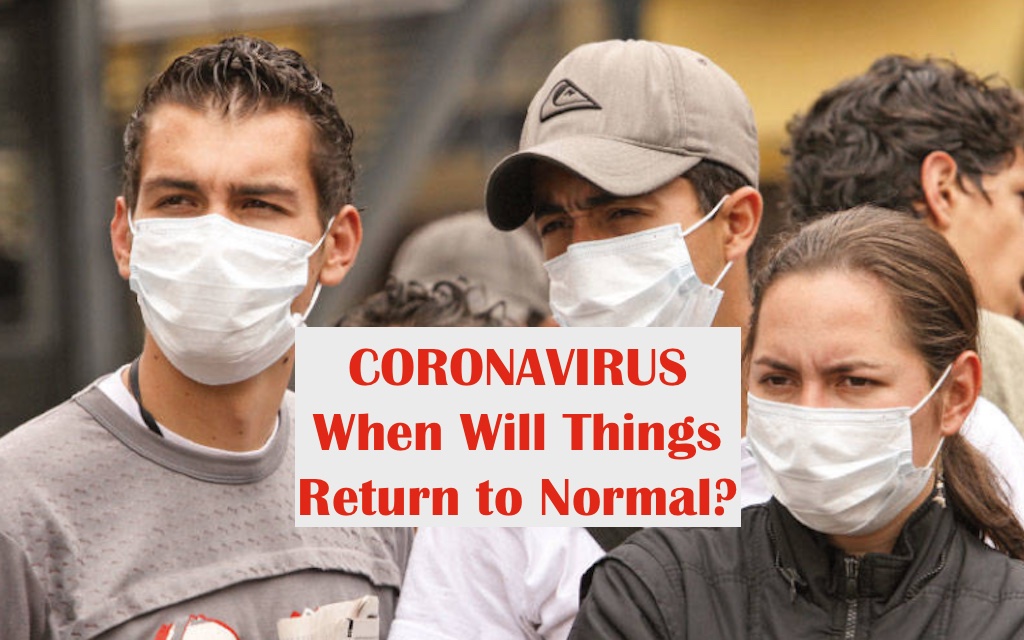
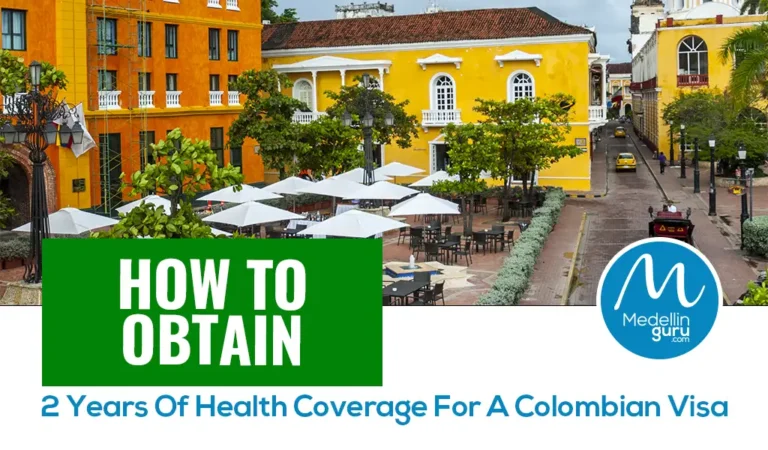



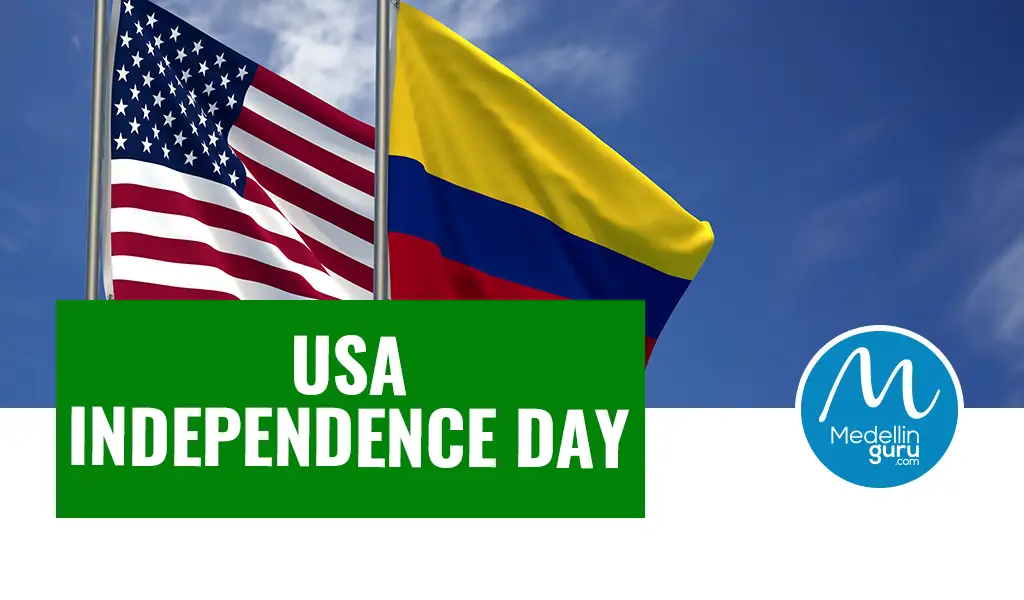
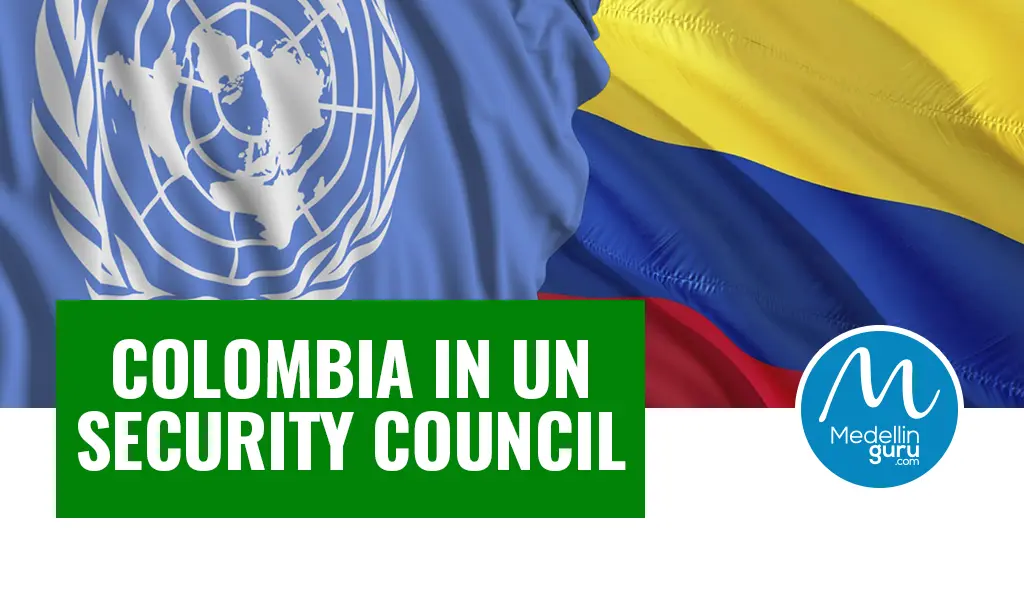
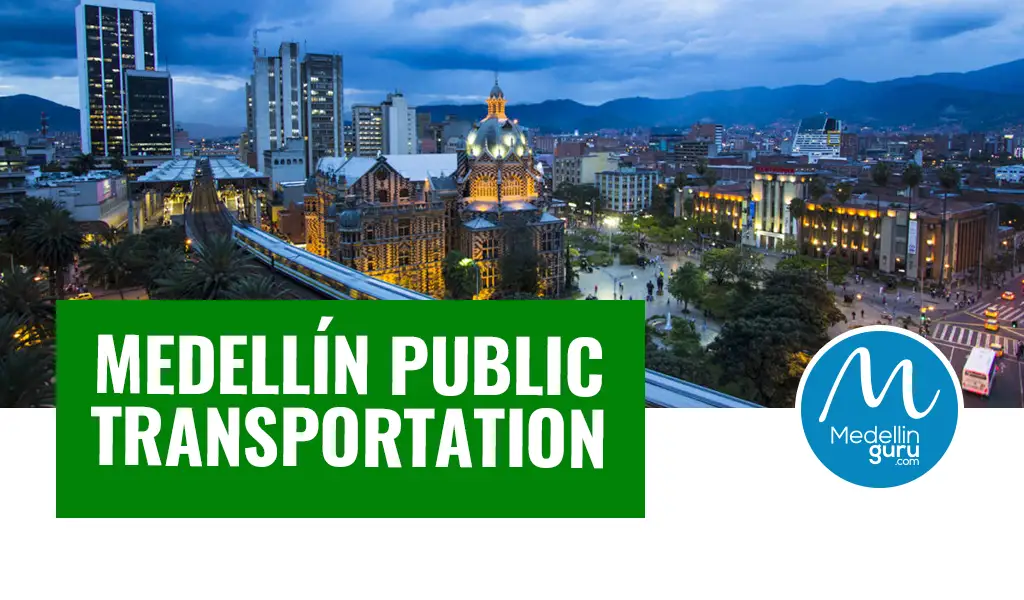
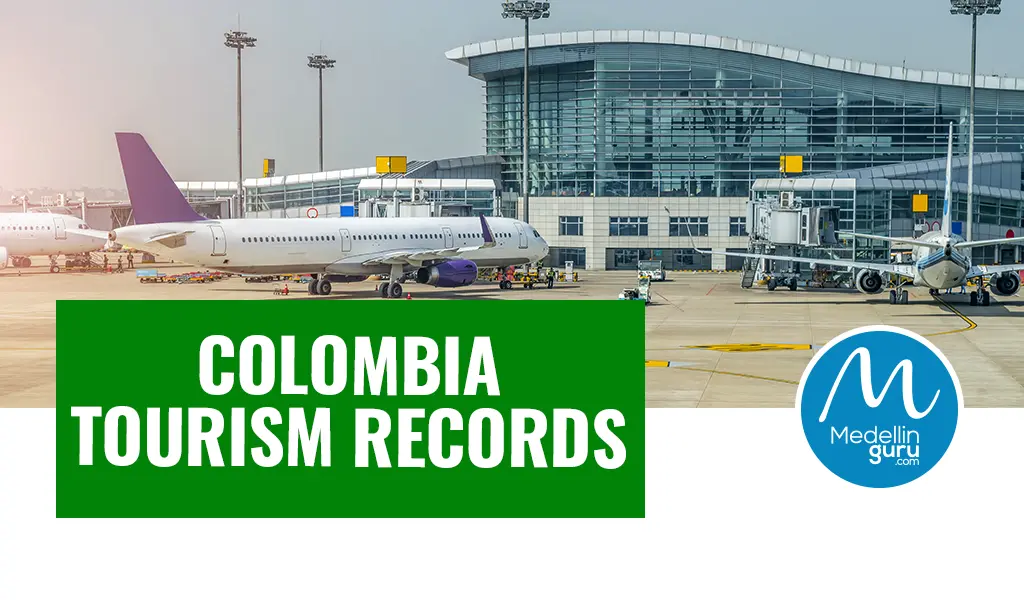

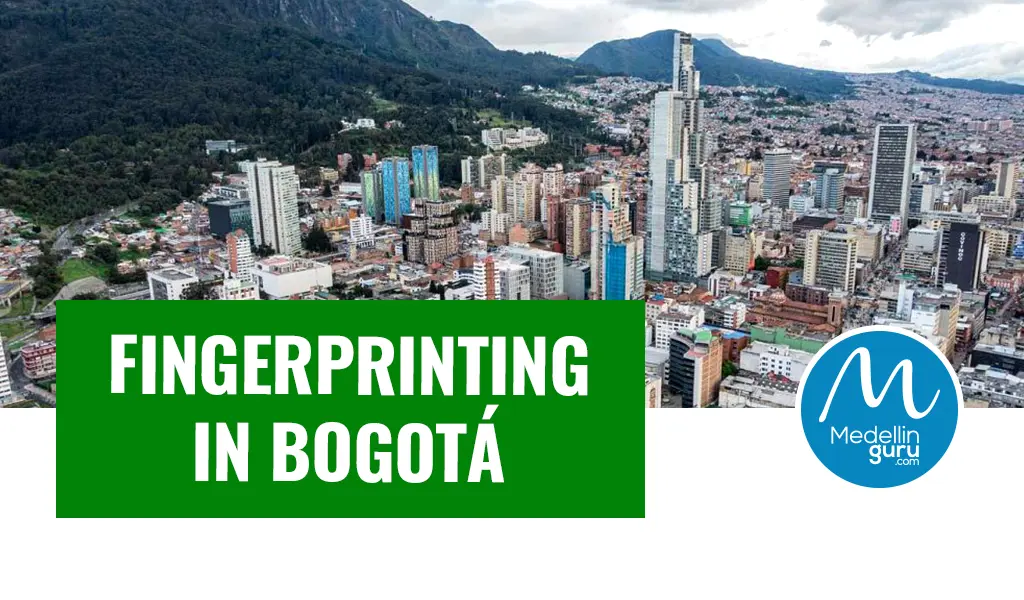

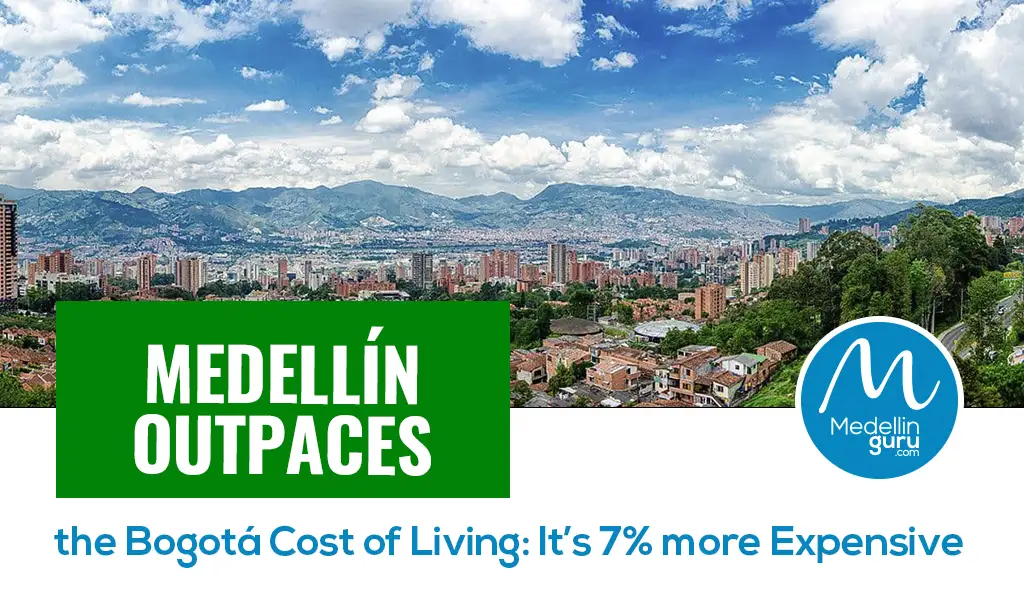



















39 thoughts on “Coronavirus: When Will Things Return to Normal in Colombia?”
When do you think gyms and bars will reopen? Are they giving up with this quarantine? There are still new cases popping up so we are going to have more cases than ever when quarantine ends after a month lol. Which means this quarantine just delayed the inveitable.
Jeff. Any change in the number of cases in Sabaneta or Envigado since the Alcaldes closed their frontiers April 13th and started checking people passing through?
See our article about Coronavirus in Colombia, which has the last date of cases in each city in Colombia that has four or more cases – https://medellinguru.com/coronavirus-in-colombia/
The last case in Sabaneta according to Instituto Nacional de Salud (INS) data yesterday was on April 6. And last case in Envigado was April 15. Also, Envigado had a case on April 14.
Closing borders and checking people arriving by roads IMHO was meaningless, as there was absolutely nobody checking people at stations arriving on the Medellín metro.
Jeff, I just wanted to echo the cudos of the others here. You do a remarkable Job and are always well armed with fact to back up your analysis and opinions.
I am in the US, and we made a big mistake not restricting movement/ quarantining early enough. That was a political decision based on federal level guidance. The President is now once again talking about opening things up. The experts here are saying that is a really bad idea since we haven’t had a peak yet.
My concern is the lag time between exposure, symptoms and recovery/ death. They are saying that it is likely that asymptomatic folks carrying the virus are able infect others without knowing they have it. That is my fear for Medellin. It is densely populated and it appears that the virus is just beginning to spread there. Certainly I would not think Medellin would be a good candidate for relaxing restrictions soon. And, as you have pointed out, neither would Bogotá. Flattening the curve reduces the death toll and infection rate, but the virus doesn’t disappear. That won’t happen until there is a vaccine/ cure. In general, it seems to me that with any large city like Medellin you would want to err on the side of caution. I have read that they estimate that each person who is infected with it potentially infects two others, which is a pretty high rate of transmission. The facts seem to argue for a more cautious approach in cities like Bogotá and Medellin while in other cities that have not even had a case of the virus it would be ok to relax restrictions a little bit,
Can you confirm there is a Pica Placa like restriction in the Estadio.Laureles neighborhood, around Calle 50 and if there is would you mind reprinting the numbers corresponding to the days of ones passport, mine is a US passport, thank you,
I really appreciate what you do, thank you, and prayers for you and Colombia!
Dr. Marco
Laureles-Estadio is part of Medellín, which has Pico y Cedula based on the last digit of your ID as follows for going to grocery stores, pharmacies and banks:
Monday: 1, 2 and 3
Tuesday: 4, 5 and 6
Wednesday: 7, 8 and 9
Thursday: 0, 1 and 2
Friday: 3, 4 and 5
Saturday: 6, 7 and 8
Sunday: 9 and 0
See our article about Pico y Cedula that has this information – https://medellinguru.com/pica-y-cedula/
Thank you very much!
Australia was one of the first countries to test 1% of it’s population. If you don’t test you don’t know. As a percentage of cases it has reduced.
The next two weeks will be telling for everyone.
Let’s hope Colombia comes out of this as well as it possibly can and the Govt lockdown was not done in vain.
Thanks for the reporting. I believe you should reconsider using China as an example. It is likely the numbers from the Chinese government are vastly under reported. We can’t learn anything from China if the numbers are not correct. Germany would be a better example.
Germany is now #4 in the world with coronavirus cases increasing at an alarming rate. So, Germany hasn’t effectively contained coronavirus and is not a good example IMHO. Germany is adding thousands of cases per day.
And we stand by using China as an example, as they used quarantines based on risk of cities and not a nationwide quarantine like in Colombia.
Germany are testing approx 500000 tests per week. They are trying to increase that to 200000 tests per day.
Australia has a good model.
Germany has capacity for 500,000 test per week. Over the past week, Germany conducted 354,521 coronavirus tests, see: https://www.ft.com/content/6a8d66a4-5862-4937-8d53-b2d10794e795. Such wide scale testing hasn’t yet helped reduce the curve in Germany as new cases and active cases are still increasing in Germany, https://www.worldometers.info/coronavirus/country/germany/.
Australia also has not reduced new case or active cases – https://www.worldometers.info/coronavirus/country/australia
For this article we specifically looked for countries that have reduced the number of new cases and with a reduction in the number of active cases.
See South Korea – https://www.worldometers.info/coronavirus/country/south-korea/ with a reduction in both new case and active cases.
See China – https://www.worldometers.info/coronavirus/country/china/ with a reduction in both new case and active cases.
Jeff thanks for the time you put in. My understanding international flights are banned until may 31st, is this correct? Do you see Colombia extending the ban further out? I live in Boston and the Governor just extended things here until May 4th. Also I believe the US has shut down incoming passenger flights( other than those set up by the State Dept.) Cargo flights are still moving same as in Colombia. My personal view is Colombia extend things until end of April if things remain flat then allows movement within the cities ( Bogotá no) for those under 70 of age. In June maybe open domestic travel , I don’t see international travel starting into late July or August , not because of cases just in Europe/US but because of the spread In Ecuador and Panama.I don’t see Panama allowing Copa to restart operations until things are under control there many international flights go through there. Also South Florida doesn’t go into lock down until Friday midnight affecting both Fort Lauderdale and Miami , with cases surging now, it will be May before they can even get a handle on things down there. just my thoughts….
All international flights to Colombia were suspended on March 23 for 30 days – see: https://www.elcolombiano.com/colombia/viajeros-proveniente-del-exterior-no-podran-entrar-a-colombia-por-un-mes-por-el-coronavirus-KB12649254. But this will very likely be extended.
Jeff, I agree with many of the others, a well-written and researched blog post here, and please know that I truly appreciate it, and for your blogging daily, which is keeping me up-to-date. The one day I didn’t ready it (yesterday) I paid for today, I almost got arrested in the street for I wasn’t aware of new restrictions on Pico y Cedula. Somehow I talked my way out of receiving a large fine. Whew. Last time I make that mistake!
Anyway, Colombia is doing a good job early on with limited resources, I agree. However, where I beg to differ with you is on the lockdown policy. I hear your logic; however, this is such a deadly, contagious, dangerous disease, the likes that we haven’t seen in a 100 years, according to the experts. It spreads like crazy. Colombia has to avoid becoming another Italy — and it seems the USA may be heading that way. (See Intercept article here: https://theintercept.com/2020/03/20/us-coronavirus-outbreak-italy/). My friends from Colombia, some of whom are doctors, tell me that they do not believe the healthcare system can handle a major pandemic, it does not have the capacity and resources (very few countries do, either, including the USA’s as well, as we are beginning to see).
Although personally and financially inconvenient to all of us including myself, I believe the country should continue with the strict quarantine, even though there are cities and regions with no positive cases yet. All it takes is one “Patient Zero” though — see the BBC’s documentary “Pandemic” of 2018 to see a large scientific study on just how a Pandemic spreads — to start the ball of death rolling in one of these cities or region. That is why travel has to be restricted, domestically as well as internationally. https://documentaryheaven.com/contagion-bbc-pandemic/. According to the conclusions, persons at key points such as supermarket workers, pharmacy workers, delivery drivers and the like should be super-sterilized and wear masks, and gloves.
Colombia should do all it can to stop and halt the spread right now until a vaccine is developed and distributed to deal with this fast moving virus. The country should continue strict quarantines AND stop international arrivals AND curtail domestic travel AND drastically increase testing AND enforce social distancing AND distribute mask for free as you state AND distribute free hand sanitizer AND distribute free plastic gloves AND increase healthcare capacity and so on and so forth. Everything thing it can do, it should. This will not be fun for any of us or its citizens, and it the country may look back years later and realize that it was overdone. However, with the evidence we see around the globe so far, this may not be the case, but rather just the opposite as the history books may write about how the country didn’t do enough with the powers and resources it had at hand. Hopefully, this is not how it will be written.
The other thing I’d like to mention is enacting “War Power Acts”. I’m not expert in Colombian political systems and government, but if such a possibility exists, and I”m sure it does, this should be enacted so the country can produce its own masks, gloves, ventilators, tests, and other needed medical equipment and even drugs (if some “treatments” are proven effective”. I’m not an expert on manufacturing capacity in the country, nor the talent pool for such, but if it exists, it shoud be enacted and fast. Whatever it can produce itself will be helpful. Imports can’t be counted on; and the opportunity to export surpluses does and will continue to exist.
As of yet there is no evidence to suggest that this “war” will not be a long one. It well could last a couple of years until a vaccine is invented, tested and distributed. Plan for the worse and hope for the better.
Yes, but they could restrict domestic travel in Colombia, and start to open up cities and regions with no positive cases at the end of the quarantine such as return to work but still have some restrictions in these cities and regions. Restricting domestic travel would be relatively easy.
Colombia is already working to dramatically increase testing and South Korea’s President today said would help Colombia so that Colombia can advance in rapid and effective tests in Colombia.
Doubtful they will open up international flights for a while.
HI Jeff
Thanks for the article!
As much as I wish, I am honestly not sure the numbers in Colombia are as positive as they seem and can be traced back to the country’s fast action. I suspect the low numbers might (partly?) due to the low amount of testing.
If you look at the number of performed tests worldwide – https://ourworldindata.org/covid-testing – top countries are performing up to ten thousands a day. Colombia has 16000 overall – over a course of almost one month.
I especially think the non-case-Cities might just not have tested much.
I’m optimistic that the drastic measures will help – I am just not sure Corona in Colombia is actually that low as the numbers say.
Good to hear to they’re ramping up testing though.
What do you think?
-Matthias
Colombia has reportedly done over 21,000 tests.
As mentioned in the article above, Colombia will be ramping up testing to 17,000 tests per day by using regional labs – see (in Spanish) – https://www.bluradio.com/salud/colombia-hara-17000-pruebas-diarias-de-coronavirus-con-entrada-de-60-laboratorios-246647-ie435. That will be more testing capacity than South Korea had, which is a similar sized country to Colombia.
Also, keep in mind the first case in Colombia was less than a month ago on 3/6. So, wasn’t much testing being done in early March.
In addition, Colombia is performing tests of patients with symptoms throughout Colombia including non-case cities and is sending to Bogotá for analysis. Unfortunately INS doesn’t publish where the tests came from only if the results are positive.
Notice none of the non-case cities have airports with international flights. And the big cities with many cases have international airports. Many cases in Colombia were imported including the first case in Bogotá that was imported from Italy. Up to 80% of the initial cases in Colombia were traced back to the Bogotá airport.
What might be interesting to us when interpret the numbers might be this ratio of tests per population:
https://ourworldindata.org/covid-testing#tests-per-million-people
So yes, 21000 tests might sound like a lot – but it’s not, on a country that size.
If you put Colombia’s numbers there – 21k tests on 50mil people – we end up with only 400 tests per million, which is comparedly pretty low.
Which I think is ok, since the crisis came here way later. But testing is nowhere and every number based on it should be put in relation to that – with only 400 tests done per people, I am afraid we are far away from having a complete picture of the virus’ spread. And any action based on these numbers (opening up quarantine etc) could be very, very grave.
I love to be positive – I am just not sure the numbers speak that way yet.
To compare colombia’s numbers with
that of other countries (which test not only persons with symptoms but everyone) and conclude anything on it, we need to have similar testing penetration.
Nevertheless, I think we’re in a good position here: The virus came later, so the government could learn from other countries and implement steps quickly.
Let’s see when the 17000/day is ramped up – then I think Colombia is able to test up a proper ratio of its people and we will have numbers that are comparable.
Testing started later in Colombia and they are ramping up testing that will be higher than the testing rate was in South Korea, which is a similar sized country to Colombia that has experienced success in containing the spread of coronavirus. Likely in the next few weeks, Colombia will be testing at a higher rate and we’ll see if the case counts increase as well.
Colombia is learning from other countries. In fact, President Duque of Colombia yesterday announced that South Korea is going to support Colombia with thousands of tests and also advise Colombia on testing, rapid tests and scientific analysis. See: https://www.eltiempo.com/politica/gobierno/coronavirus-gobierno-explico-apoyo-de-corea-del-sur-para-la-crisis-y-medidas-en-educacion-480306. I updated the article with this information. So, Colombia will benefit from South Korea’s experience in testing.
Gracias for being a great resource. I appreciate your skillful work. Living 3+ years in Sincé, Sucre
as a missionary with my Sinceana wife.
May the Lord Bless you and keep you and yours out of harm’s way.
Pray the Lord allows us to meet one day…
As a born again christian from Texas, May the Lord bless you, your families, and the rest of the world including
Texas and Colombia, only our faith in God will guide us through!
Amen
Dr, Marco
Thanks I am currently trapped in Bogota and have to wait for the embassy to open back up after lock down so we can get a visa and leave, if I have have to stay longer as the country I was heading to also under lock down I was hoping maybe to move to another location so the bit were you state domestic travel lock down was interesting, it actually sounds a good measure even though it could impact on me.
Thank you for the information presented in your article. And thank you even more for the perspective, Under quarantine, sitting around the house, its pretty easy to read anything and everything posted on the net, and maybe begin to feel the world is going down the drain, but reading clear, up to date, and factual articles such as yours sure help a person gain perspective on this world wide crisis and maybe even gain a little faith in the future. Keep it up, you are doing a great job! I am in La Meseta, above El Penol, an hour and a half out of Medellin. There are serveral hundred people living and working within a 5 mile radius of here. No one has contracted Covid19 that anyone knows about, and life largely goes on here as before. Here’s hoping the quarantine will end April 13 in this area, and all low risk areas in Colombia. Stay healthy everybody!
Thank you so much for what you do, God Bless!
Has any one heard about whether the Colombia government is going to extend its draconian measures to keep us locked down until June 1, 20202, thank you!
No word yet, they are most likely waiting to see how the quarantine goes. The national quarantine ends on April 13 and the government will be deciding before this date.
As I wrote in the article, hope they don’t extend this national quarantine. There are millions of Colombians in low risk cities that don’t yet have a single case of coronavirus. We’ll see what happens.
Colombian Director of Public Health yesterday said “Lifting the isolation will depend on the results of the measure. Although permits may be granted to workers in some economic sectors, restrictions and vigilance will be maintained during the mitigation phase”. https://twitter.com/MinSaludCol/status/1245511615774167040
Draconian?
Unnaturally strict
Yes please… Bring on the Draconian!!! I’ll take two…
I read that Colombia are now doing manual testing as the machine they were using in Bogota broke. Hopefully they fixed it or imported a new one. How many tests has Colombia done?
https://www.elheraldo.co/colombia/se-dano-en-el-ins-maquina-que-procesaba-100-pruebas-de-coronavirus-por-hora-712890
That is out of date information, if you read that article says reduced testing on March 25 and 26. After two days, the machine was fixed see: https://www.elcolombiano.com/colombia/arreglan-maquina-de-diagnosticos-de-covid-19-del-ins-en-colombia-OE12708372
That’s good. They need to test, test and implement social distancing. Fingers crossed all the good measures the government has implemented aren’t in vain.
This is a helpful article, based on thoughtful reporting. Thank you!
Thank you for the hard work and detailed reporting. Medellin Guru is a valuable and critical tool to help navigate this crisis. You are to be commended for your efforts.
I have heard this will extend out until June. And as far.as things returning to the old normal. I think at least a year. This is.a worldwide pandemic. Is there anyone out here wanting flights from spain or.New York to resume in 2 weeks??? I don’t think so. As far as resuming movement here in Colombia anytime soon. I just do not see it.. hope for the best expect the worst is my motto. Sit tight and get out the backgammon set and some dusty books.
Great article Jeff – very well written and very informative. The graph showing Colombia’s trajectory in comparison to other countries really puts things in perspective.
I think Colombia is doing a great job in acting quickly and decisively. If European countries and the US had done the same, they wouldn’t be in the mess that they’re in now.
You mention that Colombia has the capacity at the moment to test 1,200 people per day.
I, as a non-national, non-resident, was one of the last to get here, flying in to Eldorado on 15 March. I had filled in the online medical form before flying. Others completed a paper form. These were all checked at Migracion at the airport.
Two days ago I received a telephone call. Apparently the details of all arrivals in March had been passed to the EPS companies. As I am registered with a prepagada, I was told that I would be tested and that someone would come to the house where I am staying in Bogota to administer the test. I received my test yesterday and should get the result in 3 or 4 days. I have been in the over 70s lockdown since 20 March and, thank G-d, have not had any symptoms so far. I was told the testing was not limited to over 70s but it appears it is only the prepagadas that are doing this.
There is also an official website where your results can be seen – http://covid19.saludcapital.gov.co/resultados
I have to say I was impressed with the whole process – even though it does seem to be limited to those who can afford to have such insurance.
Excellent reporting and coverage, Bravo!